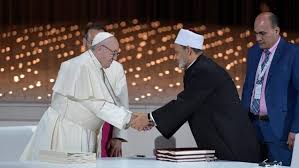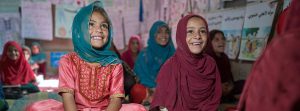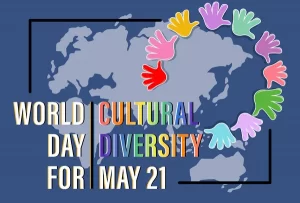
World Art Day, a celebration to promote the development, diffusion and enjoyment of art, was proclaimed at the 40th session of UNESCO’s General Conference in 2019.
Art nurtures creativity, innovation and cultural diversity for all peoples across the globe and plays an important role in sharing knowledge and encouraging curiosity and dialogue. These are qualities that art has always had, and will always have, if we continue to support environments where artists and artistic freedom are promoted and protected. In this way, furthering the development of art also furthers our means to achieve a free and peaceful world.
Each year, on 15 April, World Art Day celebrations help reinforce the links between artistic creations and society, encourage greater awareness of the diversity of artistic expressions and highlight the contribution of artists to sustainable development. It is also an occasion to shine a light on arts education in schools, as culture can pave the way for inclusive and equitable education.
 Within that frame, the General-Assembly took note of all international, regional, national and local initiatives, as appropriate, as well as efforts by religious leaders, to promote interreligious and intercultural dialogue, and in this regard took note also of the meeting between Pope Francis and the Grand Imam of Al-Azhar, Ahmad al-Tayyib, on 4 February 2019 in Abu Dhabi, which resulted in the signing of the document entitled “Human fraternity for world peace and living together”.
Within that frame, the General-Assembly took note of all international, regional, national and local initiatives, as appropriate, as well as efforts by religious leaders, to promote interreligious and intercultural dialogue, and in this regard took note also of the meeting between Pope Francis and the Grand Imam of Al-Azhar, Ahmad al-Tayyib, on 4 February 2019 in Abu Dhabi, which resulted in the signing of the document entitled “Human fraternity for world peace and living together”. 2023 Theme: For every child, every right
2023 Theme: For every child, every right In the 1950s the United Nations established the Kiswahili language unit of United Nations Radio, and today Kiswahili is the only African language within the Directorate of the Global Communications at the United Nations. The United Nations General Assembly, through its resolution 71/328 of 11 September 2017, on multilingualism, welcomed implementation of a day dedicated to each of its official languages in order to inform and raise awareness of their history, culture and use, and encouraged the Secretary-General and institutions such as UNESCO to consider extending this important initiative to other non-official languages spoken throughout the world.
In the 1950s the United Nations established the Kiswahili language unit of United Nations Radio, and today Kiswahili is the only African language within the Directorate of the Global Communications at the United Nations. The United Nations General Assembly, through its resolution 71/328 of 11 September 2017, on multilingualism, welcomed implementation of a day dedicated to each of its official languages in order to inform and raise awareness of their history, culture and use, and encouraged the Secretary-General and institutions such as UNESCO to consider extending this important initiative to other non-official languages spoken throughout the world.
 l’école du Sacré-Cœur.
l’école du Sacré-Cœur.  L’avénement d’un monde débarrassé des armes nucléaires est un des objectifs les plus anciens de l’Organisation des Nations Unies. Cette volonté était d’ailleurs déjà présente dans la première résolution de l’Assemblée générale en 1946.
L’avénement d’un monde débarrassé des armes nucléaires est un des objectifs les plus anciens de l’Organisation des Nations Unies. Cette volonté était d’ailleurs déjà présente dans la première résolution de l’Assemblée générale en 1946.


 World Multiple Sclerosis Day, falling on May 30, invites dialogue on the disease. Multiple Sclerosis (MS) is a chronic progressive disease where the insulating covers of the nervous system are damaged. MS is also known as encephalomyelitis disseminata, and its symptoms include muscle weakness, double vision, and mental/physical problems. Due to the lack of research studies on the disease, the exact causes behind it are generally unknown. Many scientists believe that there might be a connection between the onset of the disease and genes and/or nerve-cell dysfunction. Furthermore, there is no permanent cure as of yet. The symptoms can be relieved using the right set of treatments and medication.
World Multiple Sclerosis Day, falling on May 30, invites dialogue on the disease. Multiple Sclerosis (MS) is a chronic progressive disease where the insulating covers of the nervous system are damaged. MS is also known as encephalomyelitis disseminata, and its symptoms include muscle weakness, double vision, and mental/physical problems. Due to the lack of research studies on the disease, the exact causes behind it are generally unknown. Many scientists believe that there might be a connection between the onset of the disease and genes and/or nerve-cell dysfunction. Furthermore, there is no permanent cure as of yet. The symptoms can be relieved using the right set of treatments and medication.